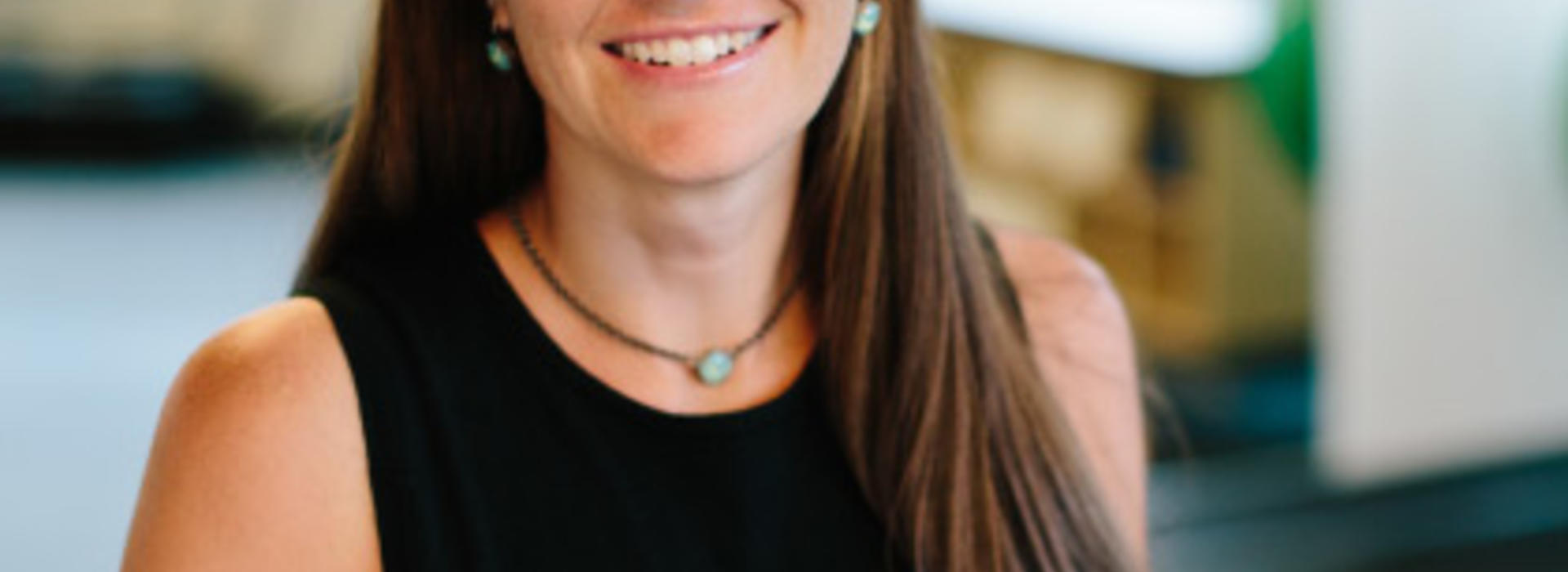
Heather Bergeson, MD, Promotes Awareness of Youth Sports Culture and Compassionate Care
The idea that “practice makes perfect” might be pushing young athletes in the U.S. too far, according to Heather Bergeson, MD, adjunct assistant professor and primary care sports medicine specialist at TRIA Orthopedic Center. In her practice, she sees many preventable overuse injuries and has been actively working to educate parents, coaches, and physicians about the dangers of professionalized youth sports.
A graduate of the pediatrics residency program at the University of Minnesota, Bergeson was not always at the forefront of orthopedics and sports medicine. After residency, she went into a primary care private practice for seven years, which she loved, but found that there was a gap in her sports medicine knowledge.
“I decided that I needed to learn again,” she says. “I wanted to offer more solutions to my patients, so I decided to go back and do a fellowship.”
Bergeson was one of the last fellows in the primary care sports medicine fellowship at Hennepin County Medical Center under Robert Johnson, MD, professor in the Department of Family Medicine and Community Health, and has been at TRIA ever since. She was also one of the first nonoperative orthopedists to join the Department of Orthopedic Surgery faculty under Denis Clohisy, MD, professor and department chair’s vision of a team of operative and nonoperative orthopedists working collaboratively to increase efficiency and better serve patients.
Bergeson’s passion to return to academics and improve sports medicine care has had an impact that reaches far beyond her patients. She was recently featured on a TEDx Talk in Edina, MN, to speak about the challenges of U.S. youth sports culture, why it persists, and how we can change it.
Bergeson’s talk starts by explaining the differences between children’s and adults’ bones.Children still have growth plates, which are areas of cartilage located at the ends of bones where the body is continually producing new bone and expanding. Since this is a growing area, it’s the last part of bone to ossify, or become hard. Growth plates can be seen on an x-ray as a thin dark line at the end of the bone, producing a tiny gap that is called the physis and is weaker and more prone to injury.
Bergeson showed an example of a young gymnast that presented complaining of wrist pain. The x-ray showed that the girl’s physis was much wider than normal due to repeated trauma from practicing gymnastics. She explained that these overuse injuries created by excessive practice are common, avoidable, and if left untreated can cause permanent growth issues.
Bergeson believes one of the keys to keeping kids playing and enjoying sports longer is to avoid early sports specialization. This means playing one sport at a time and trying different sports depending on the season, which may prevent some of those overuse injuries from repetitive movements.
“Even though we know all of the risks of early sports specialization and year-round play, we still are making our kids do this,” Bergeson explained. “Unfortunately, the behavior continues to perpetuate.”
Bergeson recommends at least one to two days off of sports per week and two to three months off of sports per year so that children’s growing bodies can recover, along with ample unstructured playtime. The rule of thumb is to limit hours of practice per week to the child’s age. For example, an eight-year-old should be practicing sports no more than eight hours per week.
“As much as we talk about changing youth sports culture and educate families about it, I’m not seeing the dial move and I think it may not beuntil our own kids have their own kids and say, ‘I’m not going to put my kid through this anymore,’” she says.
Bergeson says that both parents and coaches need to understand the idea of developmental readiness, that is, the physical, cognitive, and emotional development of a child, independent of their chronological age. Factors of developmental readiness must be considered alongside the demands and expectations of the sport that they are playing. Bergeson serves as an executive board member of the Positive Coaching Alliance, an organization that provides training to coaches, athletes, parents, and leaders around positive and developmentally appropriate training.
“I think that there are some coaches who truly understand developmental readiness, age appropriate training, and connect with kids in a way that others don’t, but even they get something out of these training sessions,” she says. “Really, all coaches should be trained if you think about how much time your child is spending with them.”
Apart from better training for coaches, Bergeson points to Norway’s “Children’s Rights in Sports” policy as a good example for the U.S. The policy sets guidelines to create more equitable, healthy play for kids. Apart from the physical injuries youth sports culture can perpetuate, Bergeson says that there is an economic component that is creating an inequitable sports culture.
“This has also become is a story of the haves and the have-nots,” she explained. “You can’t be part of it unless you can afford it, and it’s really created this chasm wherethose that can’t afford it then don’t have the opportunity to continue to excel.”
According to an article from the Atlantic, 69 percent of children from families earning a household income of more than $100,000 participated in an organized sport, compared to only 34 percent from families with an income of less than $25,000.
“If they don’t have access to play a sport at a young age, they won’t have the same coaching opportunities which, with good coaching and practice,initially does make them better,” she added. “As with anything, there’s a reason we practice, but it doesn’t necessarily mean we’re going to be a good athlete long-term. There are many examples of college and professional athletes who didn’t start playing until later in life, but they’re such talented athletes with underlying intrinsic motivation which allows them to excel.”
As a parent herself, Bergeson concedes that well-intentioned parents make mistakes regarding appropriate levels of play along the way.
“To be honest I get a little discouraged, but I think that we still have to continue to talk about it and highlight what the disadvantages are,” she says. “In the end, parents are the ones controlling this and pushing for it, and it’s just not in the best interest of their children.”
Bergeson credits her residency at the U for exposure to diverse leadership, training sites, and educational experiences that have shaped her practice.
“I’m proud of the fact that I continue to provide compassionate care and continue to learn,” she says. “I love seeing patients that I used to take care of when they were babies, and now, they come and see me for sports injuries. I love hearing people’s stories, learning what they do, and working with them to get them back to doing what they want to be doing. To me, that’s the most satisfying part.”



